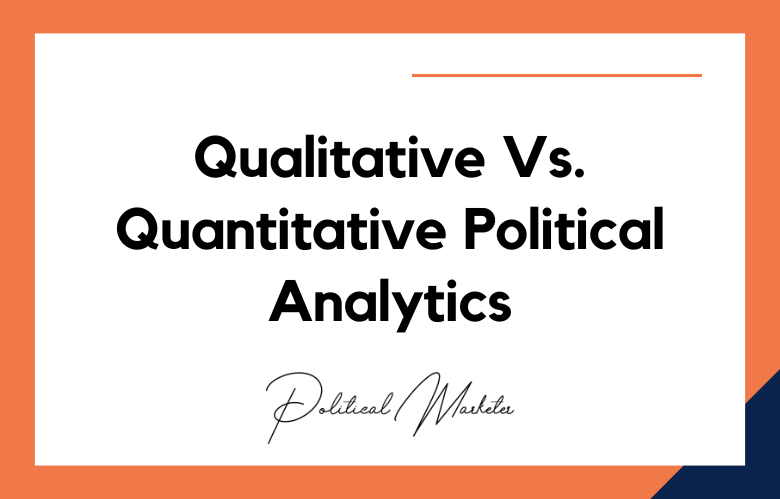Political campaign graffiti is always a common sight during electoral campaigns. Campaign graffiti has become a mainstay in modern democratic societies as political candidates often use it to share their message and connect with voters.
Nevertheless, the downside of political graffiti and its societal impact begs to be discussed.
We will examine political graffiti in society to help one understand its effects.
What is the history of Political Graffiti?
Political GraffitGraffitilong has a diverse history that stretches back centuries. Graffiti has been used for political expression, rebellion, and protest in many cultures worldwide.
It has been used to communicate political messages, to challenge authority, and to speak truth to power. Political GraffitGraffitien is a powerful tool for marginalized communities to express their experiences and grievances and to make their voices heard.
The origins of political graffiti are traced back to ancient civilizations. In Greece and Rome, Graffiti expressed political dissent against their rulers.
In Japan during the Edo period, merchants and laborers used GraffitGraffitimunicate with each other and to leave messages for officials. The Mayans in Central America used GraffitGraffitiress their political identities and resist colonialism.
How does Political Graffiti differ from other forms of GraffitGraffitiical GraffitGraffitiorm of street art specifically aimed at communicating political messages and social commentary?
It differs from other forms of graffiti. It primarily concerns political issues rather than personal expression or aesthetic considerations.
Political GraffitGraffitilong history, with examples dating back to ancient Rome and Greece.
During the 1960s and 1970s, political GraffitGraffiti an essential means of protest and dissent, particularly in the United States and Europe.
Political GraffitGraffitiso has been used in countries such as Egypt and Tunisia during the Arab Spring uprisings.
One of the key features of political graffiti is the ability to engage with significant social and political issues in a way accessible to a broad audience.
Graffiti artists use various techniques to communicate their message, including text, images, and symbols.
These messages are often challenging and provocative and can spark meaningful conversations and debates about the issues they address.
What are some of the most famous Political Graffiti artworks?
Here are a few notable examples:
“We Can Do It!” by J. Howard Miller –
This famous image of a woman flexing her arm has become an icon for feminism and women’s empowerment.
Originally used as a propaganda poster during World War II, the image was later adapted into a graffiti artwork and has since become a symbol of strength and resilience.
“Banksy” –
Perhaps the most well-known political graffiti artist, Banksy’s works have gained worldwide attention for their political statements and humorous commentary on society. Some of his most famous pieces include the “Flower Thrower” and “Girl with Balloon.”
“Berlin Wall Murals” –
In the years leading up to the fall of the Berlin Wall, political activists and artists used the wall as a canvas for expressing their frustration with the oppressive regime of the East German government.
Some of the most famous murals include “My God, Help Me to Survive This Deadly Love,” which depicts Soviet leader Leonid Brezhnev kissing East German leader Erich Honecker.
“Black Lives Matter Murals” –
In the wake of the killing of George Floyd, artists around the world have used politically charged murals to demand accountability and justice for black lives.
One particularly famous mural is the “Black Lives Matter” mural in Washington D.C., which spans two blocks and was commissioned by the city’s mayor.
How has political GraffitGraffitid?
Political GraffitGraffitirich history spans several centuries. As a form of art and communication, GraffitGraffitien used to express political opinions, dissent, and activism. Over the years, political graffiti has evolved in complexity, artistry, and the issues it addresses.
Political GraffitGraffitioted in the early 20th century during the Russian Revolution. The Bolsheviks used it to spread their propaganda, and it quickly became an effective method for expressing dissent against the government.
Political graffiti was used extensively during the civil rights movement in the United States in the 1960s and 1970s. It was associated with the fight against social injustice and racial discrimination during this period.
What are some of the most common political messages conveyed through GraffitGraffitiiti? It has been used for political expression for decades, with messages ranging from social justice to political activism.
One of the most common political messages conveyed through graffiti is anti-government sentiment. Graffiti artists often use their art to protest against the government’s policies, corruption, and oppression.
This can be seen in graffiti, which criticizeszing particular politicians or partiesexpressessing more general anti-establishment views.
Another standard political message conveyed through GraffitGraffitiial justice. Graffiti artists often use their art to highlight issues such as racism, sexism, and homophobia.
For example, graffiti artists may create art that advocates for equal rights for all races, genders, and sexual orientations or protest the injustices marginalized communities face.
How has Political Graffiti changed over time?
Political GraffitGraffitim of expression that involves writing or drawing political messages or statements on surfaces in public places, has evolved significantly over time.
Political GraffitGraffiti back to the ancient Roman Empire, where messages were inscribed on walls and buildings in cities throughout the empire.
However, modern political GraffitGraffitis roots in the United States, where it first gained popularity during the Civil Rights Movement of the 1960s.
In its early days, political GraffitGraffitipically created by young people frustrated with the political establishment who wanted to make their voices heard.
However, GraffitGraffitiolitical tool has expanded and diversified. Today, political GraffitGraffitid by activists, political parties, and governments alike.
What are some of the most famous Political Graffiti pieces?
Political GraffitGraffitien a pis owerful medium for expressing dissent and rebellion against oppressive regimes and governments. Various forms of political GraffitGraffitimerged for centuries, documenting pivotal moments in history.
One of the most famous pieces of political GraffitGraffiti iconic “Viva la Vida,” written by Ernesto “Che” Guevara during the Cuban Revolution of 1959. The phrase, which translates to “Long live life,” became a rallying cry and symbol of hope for revolutionaries worldwide.
Another famous political graffiti piece is the “Kiss of Death” mural created by an anonymous artist in Gaza. The mural depicts a Palestinian woman being kissed by an Israeli soldier while being held at gunpoint.
The artwork is a powerful statement on the ongoing Israeli-Palestinian conflict and the oppression faced by the Palestinian people.
What is the impact of Political Graffiti on society?
Political GraffitGraffitiknown as street art, has been a common and often controversial visual expression for decades.
It is an art form used to make political statements, voice opinions, and comment on various social and political issues. While some may view it as vandalism, others see it as a legitimate artistic expression.
One of the significant impacts of political GraffitGraffitiiety is that it allows individuals to freely express their opinions and viewpoints on various political and social issues.
This is particularly important in countries or regions with limited freedom of speech and expression. Graffiti can also be a powerful tool for activists and social justice movements to raise awareness about their causes.
Conclusion:
Political campaign graffiti can be divisive and contentious, but it also has the potential to foster unity and incite political engagement.
Ultimately, political GraffitGraffiti’s is neither wholly positive nor wholly negative. Political campaign graffiti can serve as a reflection of the political aspirations of a community.
As such, political campaigns must understand the potential impact of GraffitGraffitie it in a way that respects the residents of a given area and their view on their environment.
Candidates must be mindful of their message and ensure that their GraffitGraffitits positive change and genuine concern for the community.
Call: +91 9848321284
Email: [email protected]
Frequently Asked Questions (FAQs)
What are political campaign graffities?
Political campaign graffities are visual street art or wall paintings used to promote political messages, slogans, party symbols, or candidates during election seasons.
How are graffities used in political campaigns?
They are used to create high-visibility branding in public spaces, spread messages at the grassroots level, and reinforce a party’s or candidate’s identity in local communities.
Are graffities legal in political campaigning?
The legality varies by jurisdiction. In India, for example, political wall painting is regulated and often requires permission from property owners and local authorities.
Why are graffities effective in rural and semi-urban areas?
Because they are low-cost, permanent, and highly visible, making them ideal in areas with limited access to digital media or print advertising.
What is the difference between political posters and graffities?
Posters are printed and pasted, while graffities are hand-painted or sprayed directly onto walls, often custom-drawn and more permanent.
What kind of content appears in political graffities?
Slogans, candidate names, party symbols, ideological messages, voting dates, and local issues are commonly featured.
Can graffities be part of an official campaign strategy?
Yes. Many political campaigns assign dedicated teams or hire local artists to execute strategic wall branding across key constituencies.
What are the risks of unauthorized political graffities?
Defacing public or private property without permission can lead to legal action, fines, or backlash from communities or authorities.
Are there regulations for graffiti placement during elections?
Yes. The Election Commission in countries like India has guidelines restricting the use of public property without consent and enforces a model code of conduct.
How are graffities coordinated during large-scale campaigns?
Through booth-level planning, mapping high-visibility areas, and deploying wall-writing squads during the pre-campaign period.
Can graffities be digitally designed before painting?
Yes. Modern campaigns often use digital mockups to pre-visualize graffities before commissioning local painters to execute them.
Do graffities impact voter decisions?
While indirect, consistent visibility of campaign messaging can reinforce recall and emotional connection with the candidate or party.
How long do political graffities typically last?
They can last for months or even years if not removed, especially in rural areas where wall repainting is infrequent.
Are there environmental concerns with political graffities?
Overuse of chemical paints, non-removal after elections, or defacement of heritage properties can cause environmental or cultural damage.
Can graffities be used for issue-based campaigns?
Absolutely. They are effective in spreading awareness about causes like education, women’s rights, or employment guarantees.
Do political parties reuse graffiti locations?
Yes. Established wall spaces near polling booths or market areas often serve as recurring branding spots across multiple elections.
How does graffiti style vary between regions?
In some areas, it’s bold and colorful; in others, it’s minimal with symbols. Style often reflects regional artistic traditions and political culture.
Are there ethical guidelines for political graffities?
Yes. They should avoid hate speech, communal content, and must respect religious or cultural symbols and public sentiment.
How are graffities integrated with digital campaign efforts?
Photos of graffities are often posted on social media to show local presence and commitment, creating online-offline branding synergy.
What is the future of political graffities in the digital age?
While digital marketing grows, graffities remain relevant in hyper-local outreach, especially where internet penetration is low.










